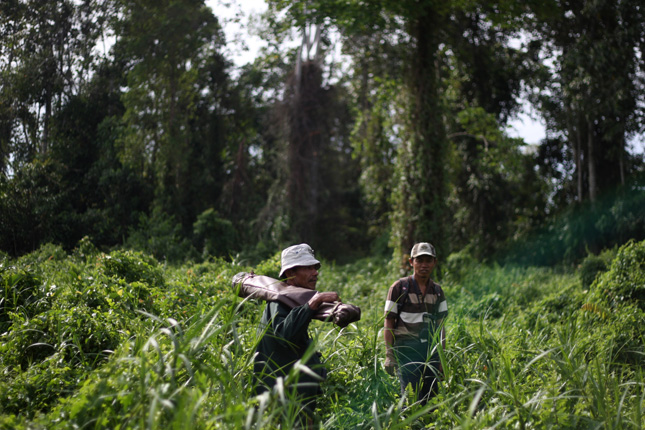-
REDD+ Progress: Forests and Solving the Climate Change Challenge
October 11, 2017 By Namita Rao
From 1870 to 2015, the CO2 concentration in the atmosphere increased significantly, said Professor Maria Sanz, scientific director at the Basque Center for Climate Change in a recent webinar organized by WWF Forest and Climate. Forests have been responsible for global greenhouse gas emissions through forestry and other land use activities. However, she noted that forests also absorb nearly one-third of the emissions generated from fossil fuels.
As humans, we can help reduce these emissions by making forests a part of our climate mitigation plans, said Sanz. Multilateral climate negotiations began discussing ways to conserve and protect forests at COP6 at The Hague. After years of negotiations, the UN Framework Convention on Climate Change (UNFCCC) formally launched REDD (Reducing Emissions From Deforestation and Forest Degradation in Developing Countries) in 2005. An expanded program, REDD+, added increasing stocks, forest conservation, and sustainable management of forests activities to the mitigation activities of REDD in 2013.
Countries seeking to implement REDD+ are required to have a National Strategy, National Forests Reference Levels, National Forest Monitoring System, and Safeguard Information system. Today, up to 60 countries are preparing their REDD+ strategies, progressing at different speeds, said Sanz. So far, 25 countries have submitted their Forest Reference Levels and more than half of them have been assessed and published. Sanz added that the process of submitting the implementation reports, during which countries work with technical assessment experts to make revisions, has helped build capacity and has received good feedback.
One of the challenging issues facing the participating countries is defining what constitutes a “forest,” – which has made it difficult to measure and compare forest levels. Using different categories and definitions for Forest Reference Levels, the Green House Gas inventory, and for forest monitoring systems can create inconsistencies that will cause challenges for monitoring, reporting, and verification of REDD+ activities, said Sanz.
Despite the challenges, by taking steps to implement REDD+, developing countries are helping to mitigate climate change. It will be especially interesting to see how REDD+ could increase the global level of ambition on tackling climate mitigation, said Sanz.
Read More:
- Can we save the world’s remaining forests? Or will REDD fail?
- Who benefits from REDD+? Read lessons learned from India, Tanzania, and Mexico
- How can REDD+ avoid becoming a source of conflict?
Sources: Basque Centre for Climate Change, Earth in Brackets, Food and Agriculture Organization of the United Nations, Global Carbon Project, REDD+ Web Platform, Science Daily, United Nations Framework Convention on Climate Change, World Wildlife Fund Global
Photo Credit: Two members of Yayasan Ekosistem Lestari walk through the bush at the healthy part of Tripa peat swamp forest in Nagan Raya, Aceh province, Indonesia, October 1, 2012. Photo courtesy of by Dita Alangkara/CIFOR
 A Publication of the Stimson Center.
A Publication of the Stimson Center.



